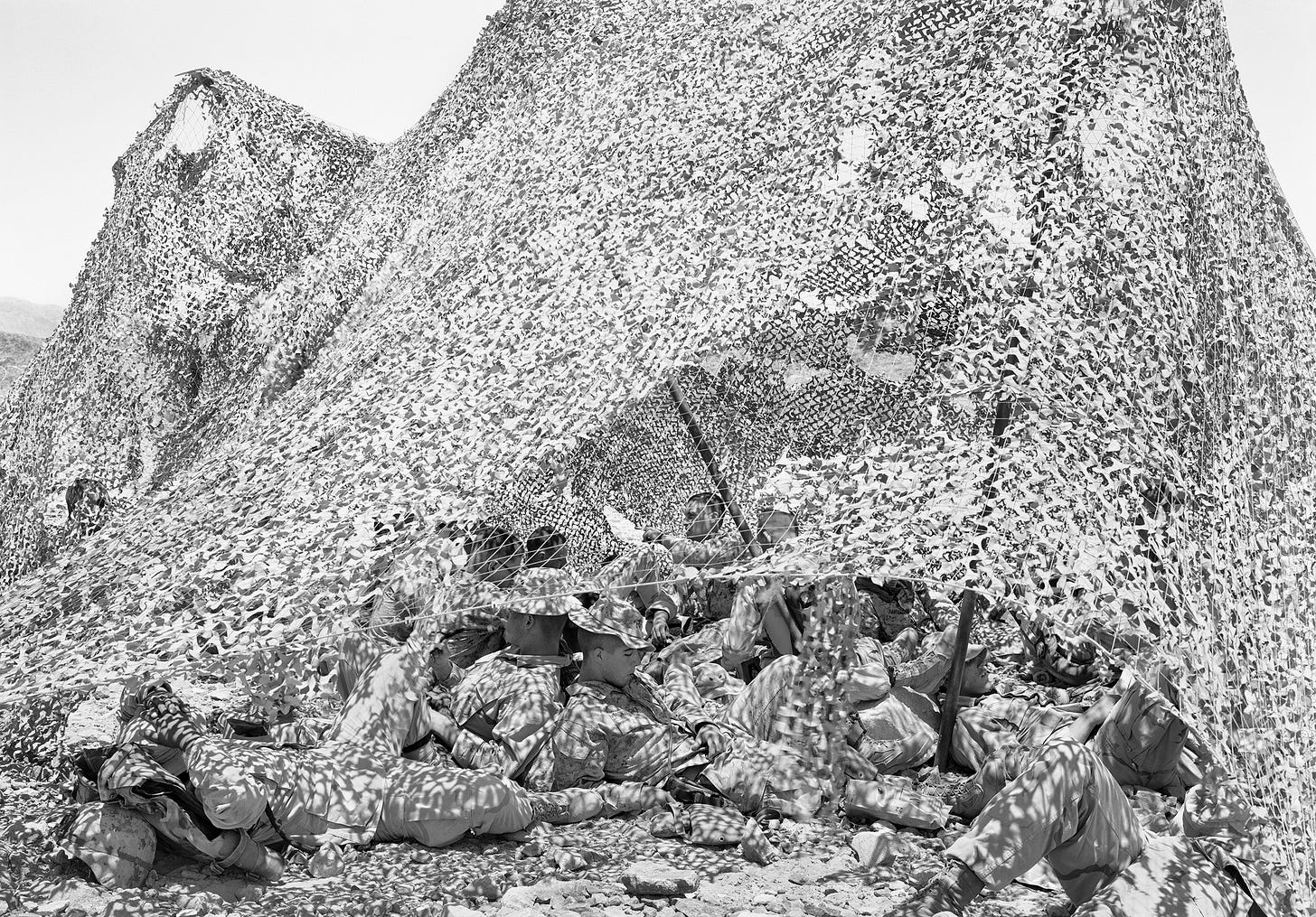Small wars
An-My Lê and moral witnessing
“To suffer is one thing: another thing is living with the photographed images of suffering, which does not necessarily strengthen conscience and the ability to be compassionate. It can also corrupt them.” — Susan Sontag, On Photography
MENTIONED: An-My Lê’s Between Two Rivers (on view at MoMA); Meeting the Devil Halfway: A Conversation; Susan Sontag’s On Photography; AI-generated “photography”

In 1999, the photographer An-My Lê went to Virginia to participate in a Vietnam War reenactment that was staged by a group of young, white men. The reenactors permitted Lê to photograph them, provided she was also in character for the entire weekend as a North Vietnamese soldier. Ironic, considering how Lê is from the South. Her family fled Vietnam in 1975 after the Fall of Saigon, and she hadn’t been able to return until two decades later, in 1994. But the reenactors weren’t former soldiers. They had no ties to the war, yet they must’ve thought it to be an inheritance, an event worth reenacting. The reenactors were estranged from war, like how Lê had become estranged from her home country.
These men were “too young to have grown up with the shadow of the news about the Vietnam War in their living room, let alone be of age to have enlisted or been drafted,” Lê recounted. And just like in a video game, a person’s history has no bearing on the role they fulfill, as enemy or ally. Yet their commitment to role-playing the minutiae of war fascinated her. This mimetic impulse wasn’t rooted in violence, hatred, or a bygone desire for American heroism, but a “[search] for an elusive experience, something ineffable,” she determined. Embedded in the literal game of war was a puerile hope for peace, a reality “where everyone [could] walk away unscathed” from battle.
Titled Small Wars, the series of black-and-white photographs that Lê captured of the reenactors contain emblems of war (guns, soldiers dressed in camo) without its horrific aura of destruction and dead-eyed distress. The motion blur in Ambush I, which camouflages the moving soldiers against the shrubbery, produces the most effective illusion of wartime chaos, whereas Sniper I is almost static, too poised to seem “real”: A female sniper, likely Lê, hides in the bushes, her gun cocked to shoot at a group of encroaching GIs. Still, without any written caption or date to contextualize Lê’s images, a viewer might think the photos were of an actual war, not a staged one. After all, there are signs of war everywhere. Although the framing of certain images, like the one of Lê in uniform, sitting next to an American soldier on a tree trunk, suggests an intimacy that is uncharacteristic of armed conflict.
What I find interesting about Lê’s work, specifically Small Wars, is the layers of simulacra at play. (I have yet to fully form my thoughts on Gangbang Girl, a series of hand-embroidered “stills” taken from a porno that Lê encountered on the internet. Two male porn actors dressed up as American GIs are having sex with two Asian porn actors, presumed to be Vietnamese prostitutes. E. said he found the embroidered scenes deeply uncomfortable, and I speculated that the discomfort may have arisen from Lê’s literal objectification of the simulation; she made a physical object out of porn, a virtual medium based on bodily objectification. The hand-embroidery imbues the poorly-lit scenes with a chiaroscuric depth and dimension, rendering the disturbing images into something tangible.)
Keep reading with a 7-day free trial
Subscribe to Vague Blue to keep reading this post and get 7 days of free access to the full post archives.


